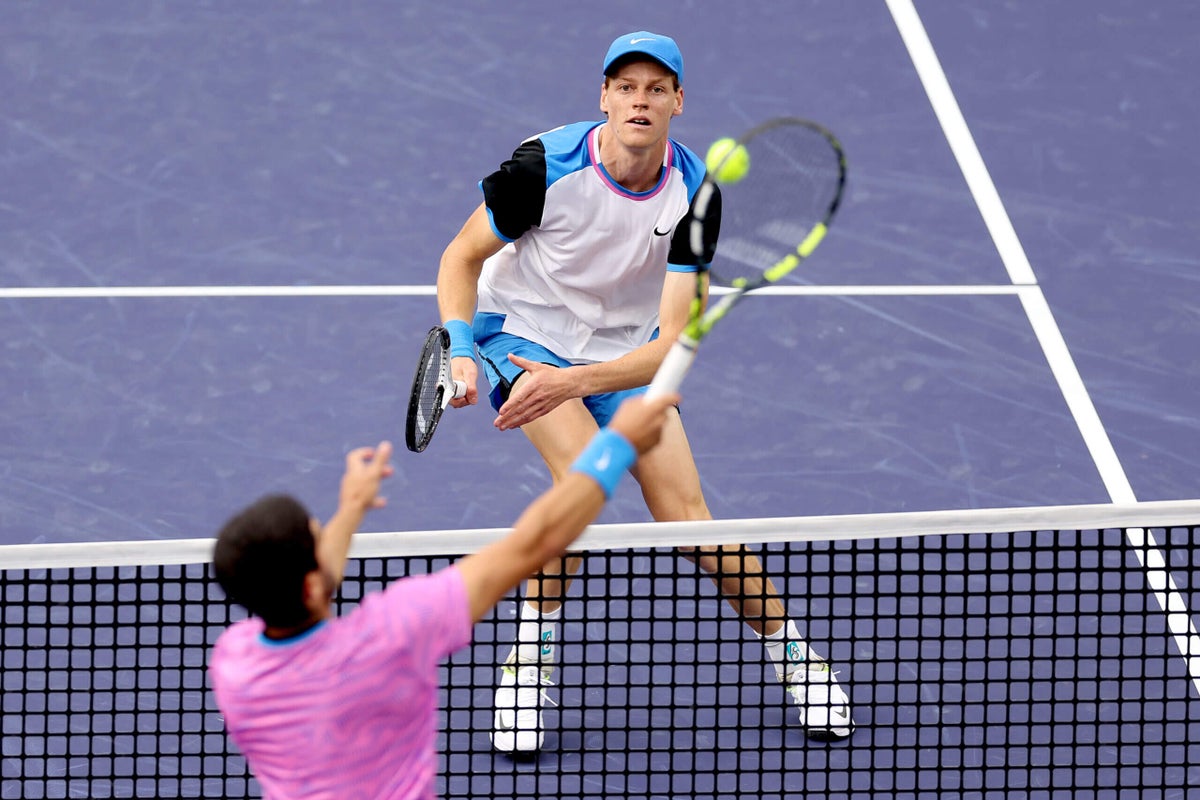Tennis stops for nothing. The ATP Next Gen Finals event rolls on in Jeddah, Saudi Arabia, while various pre-Christmas exhibitions occupy players before the season resumes from December 27 with the United Cup in Perth, Australia.
There’s still time for some reflection on 2024, and The Athletic’s tennis writers Matt Futterman and Charlie Eccleshare are here for the first of two mailbags, answering your questions submitted earlier this month. This will focus on the season just gone; the next will focus more on 2025.
Read on for their views on how to challenge Jannik Sinner and Carlos Alcaraz in the men’s game; the timeline for equal pay between the WTA and ATP Tours; whether or not tennis is getting boring and if the sport is embroiled in a doping crisis.
What will the current players do (and or can do) to prevent Sinner and Alcaraz from doing the same? What lessons were learned?
The ‘Big Three’ were freakish in their consistency. Even all-time greats ordinarily have off days, some of which result in them exiting a major or two per year prematurely. Roger Federer, Rafael Nadal and Novak Djokovic mostly avoided even that, but Alcaraz in particular looks prone to the odd upset (witness the U.S. Open this year, even if that was after a particularly gruelling run comprising two Grand Slam titles and an Olympic final).
Sinner currently has a higher floor and is far less prone to playing a few listless sets in a row; uncertainty of a different kind surrounds him because of the potential for a doping ban of up to two years. But should they both remain available and reasonably consistent, then the rest of the field has a major problem.
Casper Ruud summed it up at the ATP Tour Finals last month when he explained that the way Sinner and Alcaraz play has rewritten the book of tennis tactics that he grew up with. Patience is no longer an option with these two around: to beat them the chasing pack are going to have to teach themselves to be more aggressive even if it doesn’t come naturally. Alexander Zverev and Taylor Fritz look most up for the challenge of the current top 10.
Where Alcaraz and Sinner do recall the Big Three’s hegemony is how their extraterrestrial talent demands players to play outside themselves to beat them. It’s not enough to just hit big serves and forehands and hope that will do the job. Players need to claim the front of the court before Alcaraz and capture the baseline before Sinner — and throw in a bit of the opposite to keep them off balance. For an entire match at a time.
Right now, I don’t see Sinner and Alcaraz sharing all the Grand Slams for a decade. It’s a lot harder for two players to do that than three or four, and they are the only ones at their level — other than the version of Djokovic that won Olympic gold in Paris.
They’re going to have to deal with injuries. Sinner could get suspended for two years. Stuff happens. Others will hope to fill any voids.
Take heart — it’s better than it was, at least on the ATP Tour. Alcaraz has forced everyone to start thinking about the entire tennis court, not just the area along the baseline. Also, with Alcaraz and Sinner playing so aggressively, players increasingly have to attack before they are attacked. That is going to force them to come into the court more and build variety.
As for the women, a lot of us wish Karolina Muchova could clone herself 50 times. That said, Sabalenka has increasingly been using a drop shot. Coco Gauff is working hard on getting better at the net. A wave of serve-and-volley players seems unlikely, but we will take what we can get.
Throw out Turin. It’s a one-off. Indoors, on a very fast court with no sun or wind to contend with, players can…in 2024.
Someone I’d expect to take a step back is Alejandro Tabilo, who began the year ranked world No. 85, achieved a career high of No. 19 and is currently at No. 23. During the first half of the year, the 27-year-old Chilean had one of those periods where everything seemed to slot into place, taking in winning the Auckland 250 in January as a qualifier and then knocking an ailing Djokovic out of Rome on the way to the Italian Open semis. I’d be surprised if he hits similar heights in 2025.
As testing becomes increasingly sophisticated and detects smaller and smaller amounts of foreign substances in blood and urine, it stands to reason that positive tests will rise.
I do think it has a place, and the players seem to enjoy it and feel like it’s useful fitness work because of how explosive it is. The chance to win thousands of dollars probably helps too. Fans also appear to like it and there’s something to be said for events that guarantee — or close to guarantee — seeing the players who are competing at the event, unlike in most ATP and WTA tournaments where there’s always a risk your favourite player could go out early or not be playing on a given day.
At the moment, the Murray-Djokovic partnership is a short-term arrangement, but if things go well in Melbourne it’s tough to imagine either party walking away. Certainly not Djokovic, but also Murray: can you really see someone as competitive as him turning his back on a winning ticket?
Source link




